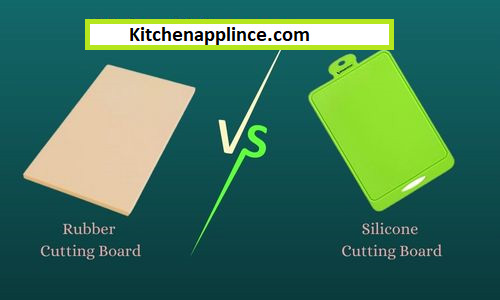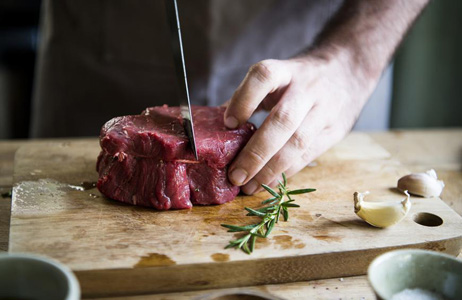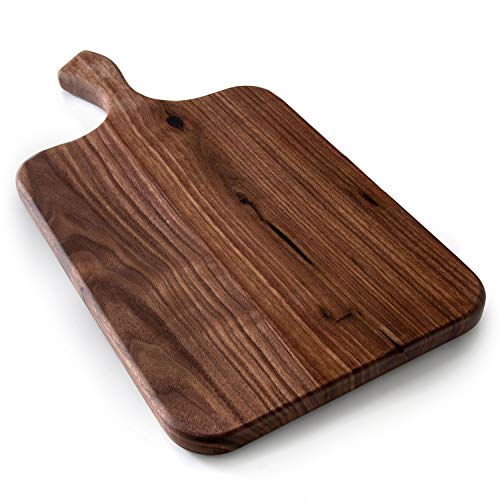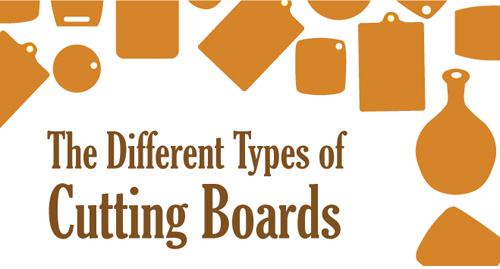Silicone Vs Rubber Cutting Board, Which is Better?
It can be a bit confusing when it comes to choosing a cutting board between silicone vs rubber cutting board. They both have their benefits and drawbacks. One may be better for your specific needs. So in this article, we’ll compare silicone and rubber cutting boards and help you decide which one is best for you.
We’ll also detail the difference between these two materials and highlight some of the key factors to consider when choosing a Silicone Vs Rubber Cutting Board. So whether you’re looking for a durable option that will last for years or a board that is easy to clean, read on to learn more about silicone vs rubber cutting boards!
Silicone Vs Rubber Cutting Board, Which is Better?

Both silicone and rubber cutting boards have their own advantages and considerations, and the choice between them depends on your specific needs and preferences. Let’s compare the two to help you make an informed decision:
Silicone Cutting Board:
Advantages:
- Non-Slip Surface: Silicone cutting boards usually have a non-slip surface, which can help keep the board stable while you’re chopping or slicing.
- Flexibility: Silicone is more flexible than rubber, making it easier to pour ingredients directly into pans or containers.
- Hygienic: Silicone is non-porous and resistant to bacteria and odors, making it a good choice for maintaining food safety and hygiene.
- Heat Resistance: Silicone cutting boards are generally heat-resistant and can withstand higher temperatures, so they can double as trivets or heat-resistant mats.
- Color Coding: Some silicone cutting boards come in different colors, allowing you to use different boards for different types of food to prevent cross-contamination.
Considerations:
- Durability: While silicone cutting boards are generally durable, they can be more prone to knife marks and cuts compared to other materials like wood or plastic.
- Cost: Silicone cutting boards tend to be more expensive than traditional plastic or rubber cutting boards.
Rubber Cutting Board:
Advantages:
- Knife-Friendly: Rubber cutting boards are relatively gentle on knives and can help prolong the sharpness of your blades.
- Durable: Rubber cutting boards are known for their durability and ability to withstand heavy use without warping or cracking.
- Absorbent: Rubber has some natural grip and absorbent qualities, which can help prevent ingredients from sliding around as you chop.
- Cost-Effective: Rubber cutting boards are often more affordable than silicone cutting boards.
Considerations:
- Hygiene: Rubber is generally more porous than silicone, which can make it a bit more difficult to thoroughly clean and may require more attention to prevent bacterial growth.
- Weight and Bulk: Rubber cutting boards can be heavier and bulkier than other options, which might not be ideal if you have limited storage space.
- Odor Absorption: Rubber cutting boards might absorb odors from certain foods, which can be challenging to remove.
Choosing the Better Option:
Ultimately, the choice between silicone and rubber cutting boards depends on your priorities. If you value non-slip surfaces, flexibility, and ease of cleaning, silicone might be a better fit for you. If you prioritize knife-friendliness, durability, and affordability, a rubber cutting board could be a more suitable choice.
No matter which type you choose, it’s important to maintain proper hygiene by regularly cleaning your cutting board and replacing it when it shows signs of wear and tear.
Know About Silicone Cutting Board
Silicone is a great material to use when you need a strong, dishwasher-safe cutting board that takes superheat. They’re water and oil-resistant and made of high-quality thick silicone, so no matter how hot your kitchen gets, they’ll stay protected under whatever temperatures are present. So it has an easy process of cleaning. You can also use them in the microwave to cook some food.
Many people ( including myself) choose silicone cutting boards because they are non-porous and hygienic, so bacteria and leftover foods cannot grow. Silicone is durable as it’s made from a polymer that doesn’t break down with UV rays, chemicals, or heat (though to be completely safe, you should never leave your grilling food too close to the flames). When cut on top of a low fire material like charcoals or hickory logs, silicone channels allow even more fuel to enter the cut.
On a lighter note, silicone cutting boards are much easier to store and can be laid flat instead of bending or standing in the way. As rubber gloves don’t grip well on silicone, there will be less mess as they won’t slip all over your counter when you’re ready to use them.
As for negative aspects of silicone cutting boards, so it’s hard to generalize on this topic – many people had issues with residue buildup when using a silicon board after prolonged use (we didn’t notice an issue at all).
Another drawback is chemical and temperature resistance decreases over time, but this symptom usually happens quickly so that you’ll always have fresh material available from your older cutting boards. Though not typically a huge concern, they can become warped and lose their usefulness if you spill hot liquids on the board.
Know About Rubber Cutting Board
Rubber cutting boards are also great for your kitchen’s grease or oil content. They’re water and oil-resistant, heat-resistant, made from synthetic rubber (best rubber), and most importantly, strong enough to handle heavy-duty prep use! The emphasis there on “cheese” because, as with all items containing additives – such as nuts, shells, or oils – that have high sugar contents, they can create a sticky residue when cooked, which not only affects you but every other product within touching distance (including wooden utensils) when a sticky mess is created.
Rubber cutting boards are excellent as they won’t warp or stain from juices that spill on them. Heat resistance means you don’t need to worry about melting your board in high temperatures, making them great items to have at locations frequented by large cooking events like parties, family get-togethers or state fairs where foods are being prepared by several people (and usually from heavy-duty equipment).
However, as with every consumable product out there, demands must be made – their durability was not immune to common wear and tear usage. One of the biggest drawbacks they suffer from is discoloration over time. And once brown too, it’s disappointing having even to consider the ageing process until something makes you think about purchasing a new cutting board.
It is also not hygienic and will break down over time. Stated once you cook on your rubber cutting board, it’ll start to deteriorate (unless, of course, you work with a commercial grade product). Because these are having the same benefits as plastic cutting boards, there’s typically no real difference between their durability – but I didn’t really want things like resins from the used products in contact with food items!
So, Silicone Vs Rubber Cutting Board, Which is Better?
We, the kitcheners or home cooks, always try to find the best fit for our lovely kitchen. So, when it is time to consider our most useful kitchen utensils like cutting boards, we need to pay extra care for this. For the best cutting board to have in your kitchen, a silicone board is a great option compared with the rubber cutting board. Why? Let’s talk about them:
Healthy and Convenient:
Rubber boards or Plastic boards are a fine option in terms of convenience, but they can breed bacteria after a few months if they’re not properly cleaned. It is not recommended to use plastic or rubber in the kitchen. Silicone ones are light in weight, simple to manipulate, clean, and known for their food safety. As a result, silicone cutting boards are the healthiest! They can prevent bacteria or germ buildup.
If the cutting board is used only occasionally, it’s okay to get a plastic or rubber one. But for daily use, you need to purchase an eco-friendly silicone good cutting board.
Simplicity and Environment Friendly:
A rubber cutting board is a good choice if you’re looking for your complete kitchen set-up. But it’s amazingly difficult to clean and maintain as well as quite fragile. When thinking about the space, materials in use, and results needed – silicone trumps all too much for me when searching for the best quality daily helpful cutting board option I can get!
In short, the giving to environment friendly is a great feature that makes silicone cutting board out-extendable than rubber one. It can sustain heat and cold better than any other materials, say Plastic or Rubber. This is because they are not porous as well as odorous like some types of foam ones you can get in shops these days! So, I prefer them for my daily routine food preparation.
Safe and Durable:
Silicone boards are stronger than rubber ones. They have great flexibility too! That means that if your chopped ingredients really do something with them after coming off the blade (it does happen!) – your utensil won’t bend like rubber boards tend to do!
There are many reasons why you should use silicone cutting boards. They’re highly durable and will stay in good condition for a longer period of time without changing the look or wearing out easy. You can wash rubber cutting boards with soap and water and a sponge to clean stains or raw meat easily, but they may have some smell or odors that we don’t really like on our food while they remain around the kitchen area.
Non-slippery and Non-sticky:
You can also choose a silicone cutting board that has nonskid rubber feet on the bottom to keep it from slipping when you are gripping an item with fingers and chop them normally without leaving scratches on countertops or tabletops for damage defacement of its surface cloths from knife marks and helps maintain the longevity of your sharp knife edge. So, it is visible that silicone boards are scratch-resistant from kitchen knives.
Furthermore, a silicone cutting board has better non-stick qualities than a rubber board, so you don’t need to use special oils or substances, which makes it particularly safe for the food and health of customers.
Looks:
Silicone cutting board looks more stylish than rubber ones. Even when you don’t care at all if the board will make food stains, it should still always be stored away from sunlight to prevent discoloration and deterioration due to ultraviolet rays like other types of materials do. Silicone is a better choice for a final eye-catching design and is lightweight!
Moreover, these two types of boards come in different shapes and sizes, but the quality of design also varies with each kind. But most importantly, cutting boards or countertops may have various colours, they are not safe to use permanently depending on the labor requirements of your own kitchen workers.
Easy to clean:
This type of rubber cutting board is easy to clean and use. They are dishwasher safe. But silicone can also be easily washed by water spray or sponge. You don’t need any special cleaners to have a good effect when washing food ingredients with these simple, non-stick materials each time you salt them in preparing fine meals!
Also,You can easily clean the silicone cutting board in the dishwasher. You can wipe the surface and the juice groove with a soft towel to remove any residue between the dishes, then dry off and use them again. If your cooks always move to another location for work or home, you may need to wash the chopping board of silicone many times for clean and healthy food preparation.
Hygiene and avoiding cross-contamination:
Due to anti-bacterial and synthetic materials, rubber cutting board is not safe for preventing diseases or infection of customers. There are even cases where the boards split into some edges or bases due to bacteria interaction! Also, if someone contracts food poisoning while working with these messy boards in their own training ground, they will certainly die a very cruel death because there is no pure vegetable oil in most processed foods nowadays! Although it seems that rubber cutting boards have some special features such as anti-bacterial and antiseptic, it is just an illusion for sure!
In addition to the advantages that silicone cutting boards offer, these products are also safe and good for health. Suppose you really want not to see unwanted things like leftover food grains or bacteria occurring in your kitchen area. In that case, a silicone cutting board is perfect for you as they avoid cross-contamination and increase cleanliness compared with countertops made from wood or other materials.
Which is better: silicone or rubber cutting board?
There is no one-size-fits-all answer to this question, as the best cutting board depends on your needs and preferences. Silicone boards are often considered to be more sanitary, as they are less likely to harbor bacteria and fungus. They are also easier to clean, as they do not require soap and water. On the other hand, rubber boards are harder and more durable, making them better for thicker foods. They also tend to be less slippery, making them more comfortable to use.
Ultimately, it comes down to personal preference. If you are careful and use a silicone board in the kitchen, it will serve you well. If you tend to drop things and need a board that is tough as nails, then a rubber board might be a better choice for you.
What type of cutting board do you prefer/use? Rubber or Silicone?
There are pros and cons to both types of cutting boards, but in the end, it comes down to personal preference. Rubber cutting boards are typically cheaper than silicone ones, but they tend to get harder and wear out faster. Silicone cutting boards generally are more expensive, but they are more durable and do not require oiling or filing. Some people also find them more aesthetically pleasing.
Ultimately, it is up to the individual to decide which type of board is best for them. Just be sure to consider factors like budget, yearly use, and intended use. But we suggest you to use a Silicone Cutting Board.
Can you use plastic wrap on a silicone cutting board instead of washing it with soap and water after each use?
There is some debate on the matter, but most people believe that plastic wrap can be used on a silicone cutting board in place of washing it with soap and water after each use. Some argue that the plastic wrap will not harm the silicone cutting board and that it can even act as a protector.
Others say that while the plastic wrap may not harm the silicone cutting board, it might still leave residue behind that can cause food allergies. If you are still unsure, it is best to wash the cutting board with soap and water as usual.
What are the drawbacks to using a rubber cutting board?
When it comes to cutting food, a rubber cutting board is a much safer option than using a plastic or wood board. Not only is it non-toxic, but it is also extremely durable and resistant to scratches and chips. In addition to being safer, a rubber cutting board also has the added benefit of being faster and easier to clean than bamboo or wooden cutting board. You need to rinse it with water and soap, and you’re done!
There are, of course, some drawbacks to using a rubber cutting board. First of all, a rubber board is not as flexible as a wooden board, so it may not be as ideal for delicate tasks like carving meat. Additionally, rubber is not as absorbent as wood, so food can get stuck on the surface and be difficult to clean. Lastly, rubber does not conduct heat as well as wood, so foods may not heat up as quickly on the cutting surface.
Is there any difference between white and colored silicone cutting boards?
There is a bit of difference between white and colored silicone cutting boards. Some people believe that colored silicone is more durable, while others believe white silicone is preferable. The truth probably lies somewhere in the middle, but it is important to choose a cutting board that is going to last long and look good while it does.
White silicone is generally considered to be the more durable option, as it can handle more wear and tear than colored silicone. Colored silicone can start to look worn and dingy after a while, while white silicone will still look clean and new. Additionally, colored silicone might not be ideal if you have a high-traffic kitchen, as it can be difficult to keep clean.
Ultimately, it is important to choose a right cutting board that is going to look good and be easy to keep clean.
What are the benefits of using a silicone cutting board over rubber cutting boards?
There are a few benefits to using a silicone cutting board over a rubber cutting board. Silicone is a synthetic material that is much more resistant to bacteria and fungus than rubber. This means that silicone cutting boards will not become infected with these organisms, and will be easier to clean. Additionally, silicone is a denser material than rubber, so it is less likely to warp or crack when wet.
Another benefit to silicone cutting boards is that they are dishwasher-safe. This means that you can easily clean them in the dishwasher without having to worry about the rubber cutting board getting damaged. Silicone cutting boards also come in a variety of shapes and sizes, so they are perfect for both small and large kitchens.
Conclusion:
After reading this blog, one thing is for sure – silicone vs rubber cutting boards are a hotly debated topic. Some people swear by silicone because it’s supposedly non-toxic and lasts longer than rubber boards. Others swear by rubber boards because they say they don’t harbor bacteria or that they are easier to clean.
Ultimately, it comes down to your personal preferences. If you want a cheaper option that is easy to clean, silicone boards might be the best choice for you. If you want a more durable board that doesn’t require much maintenance, rubber boards might be better. Which one do you think is the best? Please write a comment and let us know your thoughts!




